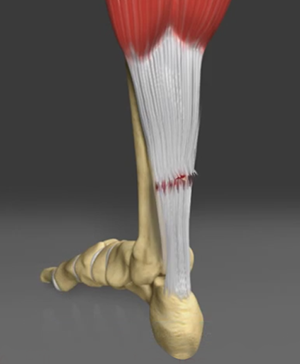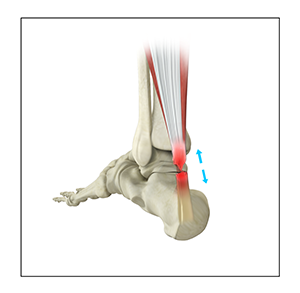Achilles Tendon Rupture
The Achilles tendon is a strong fibrous cord present behind the ankle that connects the calf muscles to the heel bone. It is used when you walk, run and jump. When the Achilles tendon becomes thin, weak, or if it is not used, it may be susceptible to injury or damage. Achilles tendon rupture occurs most often in middle-aged athletes participating in activities that involve running, pivoting and jumping. Sports that may cause Achilles rupture include tennis, racquetball, basketball and badminton.

What are the symptoms of Achilles tendon rupture?
Achilles tendon rupture can cause severe pain in the back of your leg, swelling, stiffness, and difficulty to stand on tiptoe and push your leg while walking. A popping or snapping sound is heard when the injury occurs. You may also feel a gap or depression in the tendon, just above the heel bone.
How is Achilles tendon rupture diagnosed?
Your doctor diagnoses the rupture based on your symptoms, history of the injury and physical examination. Your doctor will gently squeeze the calf muscles. If the Achilles tendon is intact, there will be flexion movement of the foot. If it is ruptured, there will be no movement observed.
What are the treatment options?
Achilles tendon rupture can be treated using non-surgical or surgical methods. Non-surgical treatment involves wearing a cast or special brace to bring the tendon back to its normal length. Along with a cast or brace, physical therapy may be recommended to improve the strength and flexibility of the leg muscles and Achilles tendon.

How can you prevent an Achilles tendon injury?
To prevent an Achilles tendon injury, it is a good practice to perform stretching and warm-up exercises before participating in any activities, gradually increasing the intensity and length of time of activity. Muscle conditioning may help to strengthen the muscles in the body.






